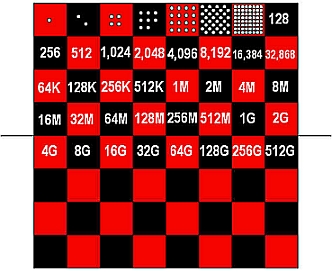The seed counting - by Bhaskara The Teacher
Bhaskaracharya was a 12th century Mathematician, born in modern day Karnataka. He was one of the original thinkers who wrote on mathematics. A medieval inscription in an Indian temple reads:-
Triumphant is the illustrious Bhaskaracharya whose feats are revered by both the wise and the learned. A poet endowed with fame and religious merit, he is like the crest on a peacock.
Bhaskaracharya wrote the Siddhānta Śiromani (1150 AD), a treatise on mathematics when he was 36 years old. It is divided into 4 parts and can be considered as separate works.
Imagine math written in a poetic language and named as "The Beautiful". Well, its the Lilavati. The name of the book comes from his daughter, Lilāvati. The book contains thirteen chapters, 278 verses, mainly arithmetic and measurement.
Bijaganita It is divided into six parts, contains 213 verses and is devoted to algebra. It was the first text to recognize that a positive number has two square roots (a positive and negative square root).
Ganitadhyaya and Goladhyaya are devoted to astronomy. All put together there are about 900 verses.(Ganitadhyaya has 451 and Goladhyaya has 501 verses).
Imagine math written in a poetic language and named as "The Beautiful". Well, its the Lilavati. The name of the book comes from his daughter, Lilāvati. The book contains thirteen chapters, 278 verses, mainly arithmetic and measurement.
Bijaganita It is divided into six parts, contains 213 verses and is devoted to algebra. It was the first text to recognize that a positive number has two square roots (a positive and negative square root).
Ganitadhyaya and Goladhyaya are devoted to astronomy. All put together there are about 900 verses.(Ganitadhyaya has 451 and Goladhyaya has 501 verses).






 is the total number of grains.
is the total number of grains.



